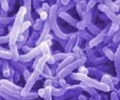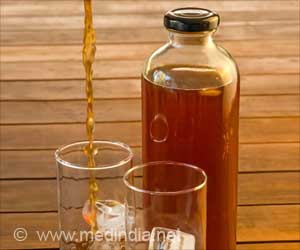When bound to proteins, water molecules in our body participate in a carefully choreographed ballet that permits the proteins to fold into their functional, native states. This delicate dance is essential to life. Hence the water fluid in our body has different physical properties from ordinary bulk water.
"Water in our bodies has different physical properties from ordinary bulk water, because of the presence of proteins and other biomolecules. Proteins change the properties of water to perform particular tasks in different parts of our cells," said Martin Gruebele, a William H. and Janet Lycan Professor of Chemistry at the University of Illinois.Consisting of two hydrogen atoms and one oxygen atom, water molecules are by far the body's largest component, constituting about 75 percent of body volume.
"While it is well known that water plays an important role in the folding process, we usually only look at the motion of the protein," said Gruebele, who also is the director of the U. of I.'s Center for Biophysics and Computational Biology, and a researcher at the Beckman Institute.
"This is the first time we've been able to look at the motion of water molecules during the folding process."
Using a technique called terahertz absorption spectroscopy, Gruebele and his collaborator Martina Havenith at the Ruhr-University Bochum studied the motions of a protein on a picosecond time scale (a picosecond is 1 trillionth of a second).
The technique, which uses ultrashort laser pulses, also allowed the researchers to study the motions of nearby water molecules as the protein folded into its native state.
Advertisement
Terahertz spectroscopy provides a window on protein-water rearrangements during the folding process, such as breaking protein-water-hydrogen bonds and replacing them with protein-protein-hydrogen bonds, Gruebele said.
Advertisement
In tests on ubiquitin, a common protein in cells, the researchers found that water molecules bound to the protein changed to a native-type arrangement much faster than the protein. The water motion helped establish the correct configuration, making it much easier for the protein to fold.
"Water can be viewed as a 'designer fluid' in living cells," Gruebele said.
"Our experiments showed that the volume of active water was about the same size as that of the protein," Gruebele added.
Source-ANI
SPH








